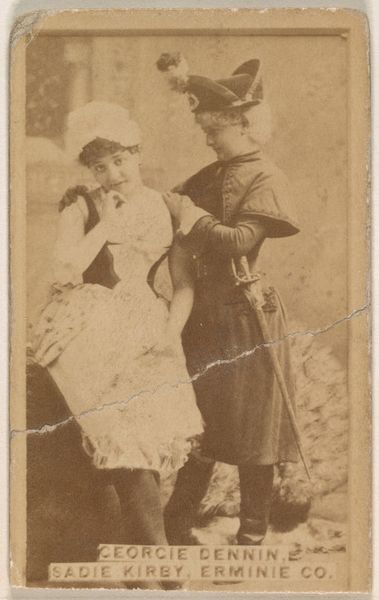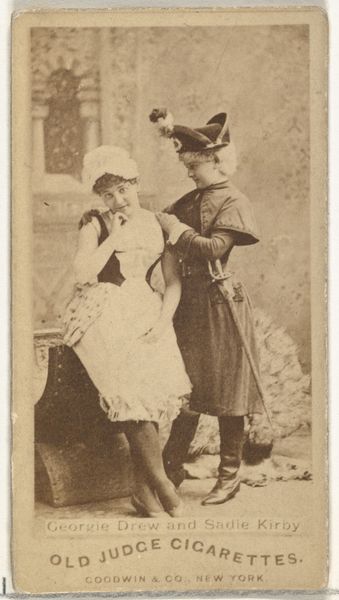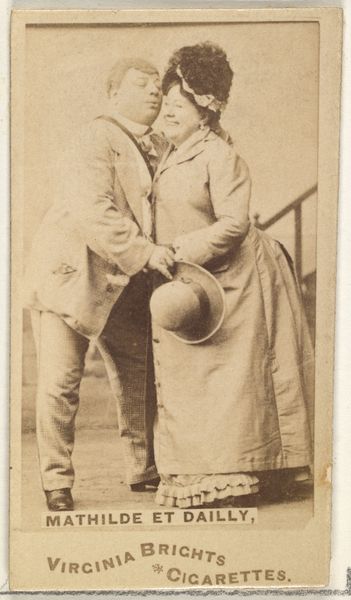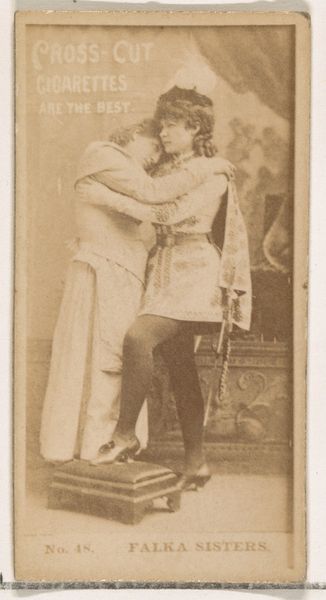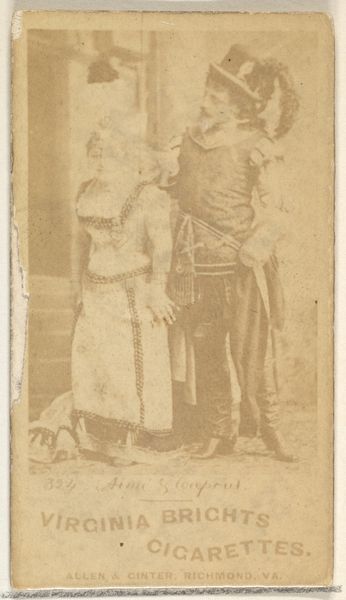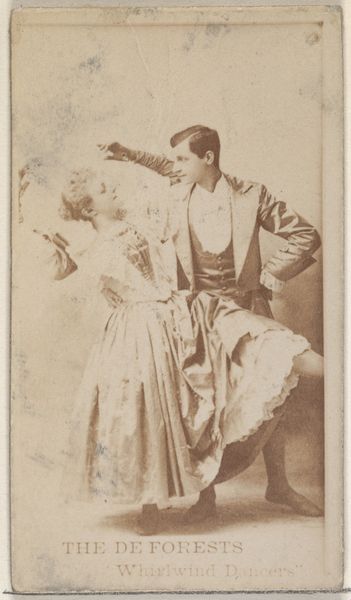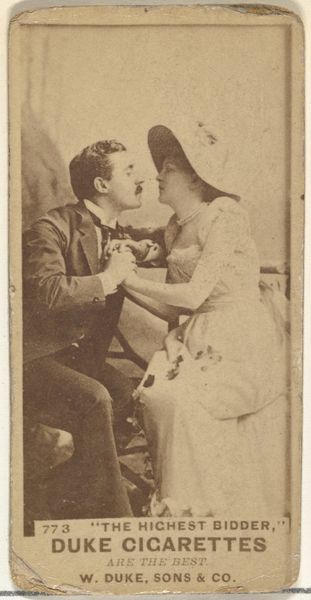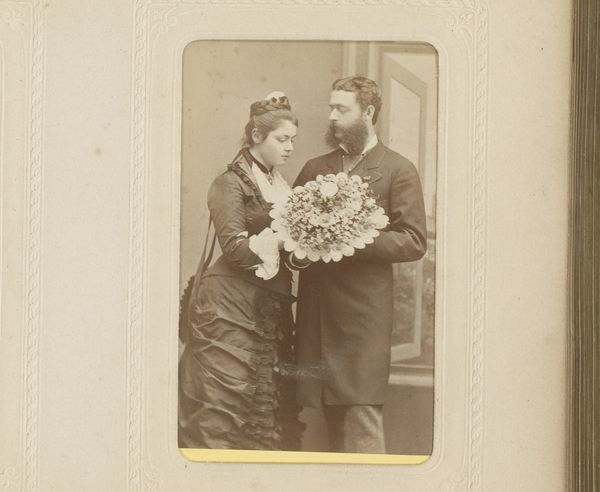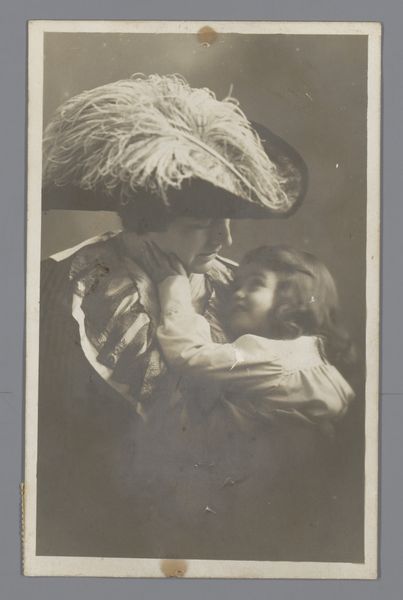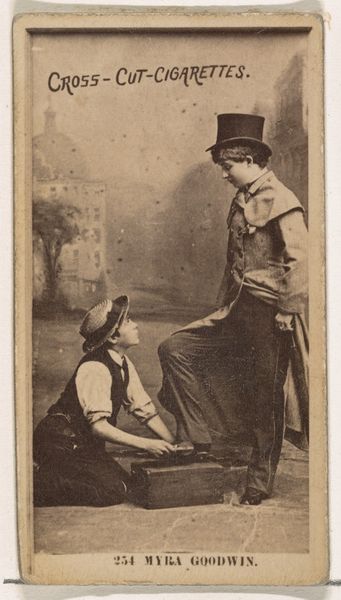![[Actor and actress embracing], from the Actors and Actresses series (N145-8) issued by Duke Sons & Co. to promote Duke Cigarettes by W. Duke, Sons & Co.](/_next/image?url=https%3A%2F%2Fd2w8kbdekdi1gv.cloudfront.net%2FeyJidWNrZXQiOiAiYXJ0ZXJhLWltYWdlcy1idWNrZXQiLCAia2V5IjogImFydHdvcmtzLzUwYjE3NGM1LTY5MmYtNDg5My1hOWFlLTNhZjY3ZWU2OWE4ZC81MGIxNzRjNS02OTJmLTQ4OTMtYTlhZS0zYWY2N2VlNjlhOGRfZnVsbC5qcGciLCAiZWRpdHMiOiB7InJlc2l6ZSI6IHsid2lkdGgiOiAxOTIwLCAiaGVpZ2h0IjogMTkyMCwgImZpdCI6ICJpbnNpZGUifX19&w=3840&q=75)
[Actor and actress embracing], from the Actors and Actresses series (N145-8) issued by Duke Sons & Co. to promote Duke Cigarettes 1890 - 1895
0:00
0:00
drawing, print, photography
#
portrait
#
drawing
# print
#
figuration
#
photography
#
genre-painting
Dimensions: Sheet: 2 11/16 × 1 3/8 in. (6.8 × 3.5 cm)
Copyright: Public Domain
Editor: Here we have an intriguing promotional print by W. Duke, Sons & Co., from around 1890-1895, titled '[Actor and actress embracing]'. It's from the Actors and Actresses series and was actually issued to promote Duke Cigarettes. I’m struck by the staged nature of the embrace and the materials involved in producing it – paper, ink, and photography combined. What do you make of it? Curator: Precisely! Let’s look closer at the act of production here. This isn't just art, it's advertisement. Consider the labor involved: from cultivating tobacco, manufacturing cigarettes, photographing the actors, printing the image, to its distribution. It creates a fascinating intersection of the culture industry, theatrical performance, and commodity capitalism. What is being consumed here: the image, the cigarette, or the celebrity image? Editor: That makes so much sense! It's easy to see the photograph as just an image of performers, but the photograph *itself* is also a commodity. The labor of making and distributing the photograph parallels the product it promotes. Curator: Exactly. And note how the photographic process itself flattens and standardizes. It turns individual performances into repeatable images for mass consumption, impacting how labor and artistic talent are commodified. How do you think the accessibility of photography impacts traditional art forms like portraiture and painting at this time? Editor: Wow, I hadn’t thought of that. The photograph is a way to bypass traditional methods of artmaking while being produced at a larger scale...making art accessible to all through commerce. Curator: Absolutely. So, instead of asking whether it's *good* art, we need to ask *what* it does, *who* it serves, and *how* it reveals the social relations embedded in its creation and distribution. It shows how “high art” like portraiture is re-evaluated within popular visual media and industrial capitalism. Editor: It's been so helpful to shift the focus from just the subject matter of the image to the materiality and broader systems that created it. Thanks!
Comments
No comments
Be the first to comment and join the conversation on the ultimate creative platform.
